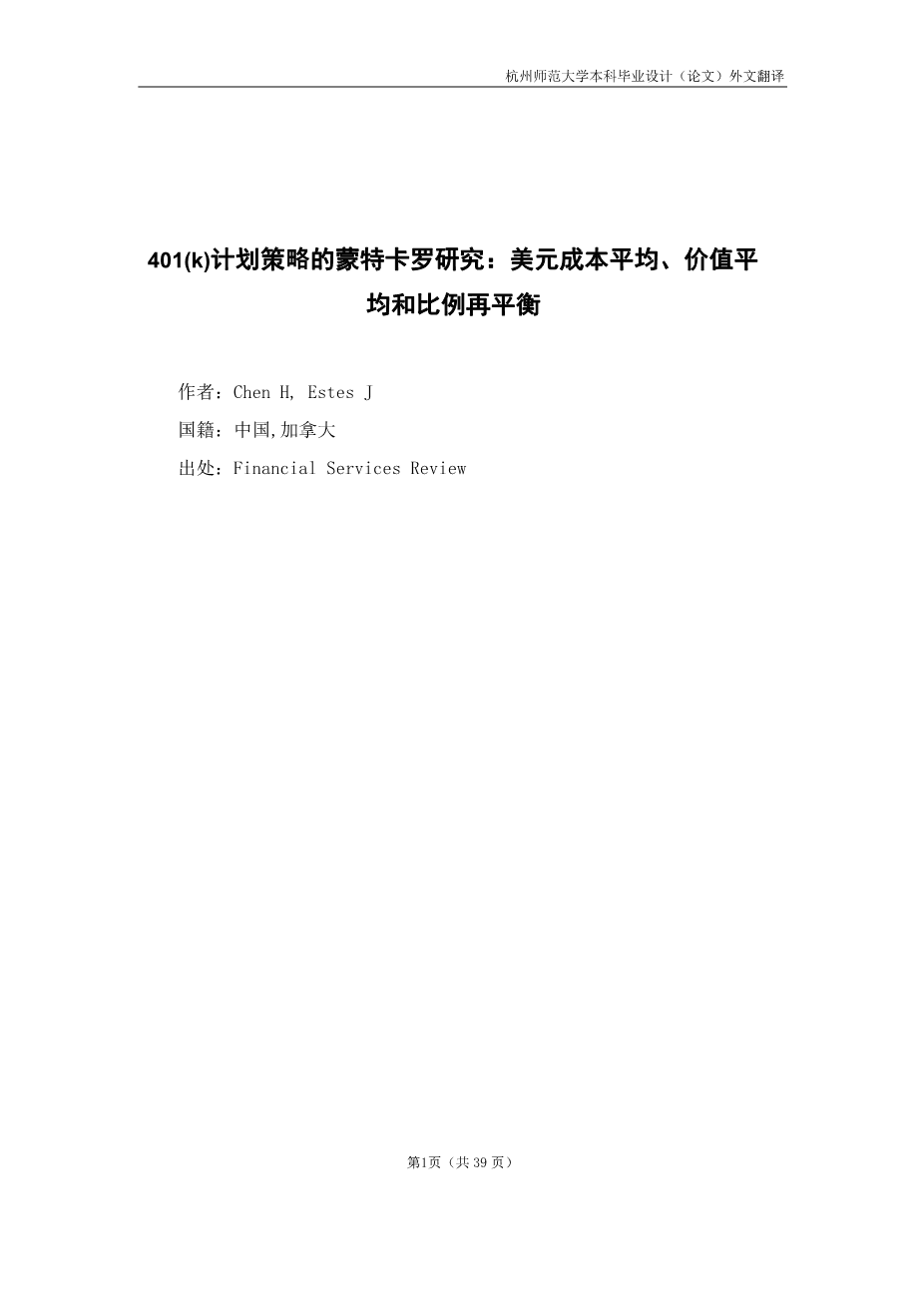
英语原文共 40 页,剩余内容已隐藏,支付完成后下载完整资料
See discussions, stats, and author profiles for this publication at: https://www.researchgate.net/publication/228716243
A Monte Carlo Study of the Strategies for 401 (k) Plans: Dollar-Cost-Averaging, Value-Averaging, and Proportional Rebalancing
Article
CITATIONS READS
3 575
2 authors, including:
California State University, San Bernardino
7 PUBLICATIONS 7 CITATIONS
Some of the authors of this publication are also working on these related projects:
Papers View project
All content following this page was uploaded by Jim Estes on 09 February 2015.
The user has requested enhancement of the downloaded file.
A Monte Carlo Study of the Strategies for 401(k) Plans: Dollar-Cost-Averaging, Value-Averaging, and Proportional Rebalancing
Haiwei Chen, Ph.D.
University of Texas, Pan American Department of Economics and Finance 1201 W. University Drive Edinburg, TX 78539
Tel: 956-381-3338
Email: chenh@utpa.edu
Jim Estes, Ph. D., CFP
California State University, San Bernardino
Department of Accounting and Finance
5500 University Parkway
San Bernardino, CA 92407
Tel: 909-880-5773
E-mail: jimestes@csusb.edu
- Corresponding author. We received helpful comments and suggestions from Shawn Brayman, Kenneth Moon, Daniel Walz, and session participants of the Academy of Financial Services 2009 meeting in Anaheim, CA. We also thank Clifford Adikuono for excellent research assistance. The usual disclaimer applies.
A Monte Carlo Study of the Strategies for 401(k) Plans: Dollar-Cost-Averaging, Value-Averaging, and Proportional Rebalancing
Abstract
This study compares the performances of three popular strategies in the financial press, i.e., dollar-cost-averaging, value averaging, and proportional rebalancing. Monte Carlo simulations show a high frequency of dominance for the value-averaging approach in generating a higher terminal value in an individual‟s 401(k) retirement portfolio over the other two strategies. In addition, total risk of the portfolio is lower under value averaging than under dollar cost averaging. Value averaging provides the highest reward-risk ratio as well as highest likelihood of meeting the investment goal. Based on the overall consideration of terminal value, total risk, modified Sharpe ratio, downside risk, and dominance frequency, a targeted annual growth rate of between 10% and 12% for the equity account should be used as the target growth rate in conducting value averaging.
Jel Classification: G10; G23
Keywords: 401(k) investing, dollar-cost-averaging, value-averaging, proportional rebalancing, simulation
A Monte Carlo Study of the Strategies for 401(k) Plans: Dollar-Cost-Averaging, Value-Averaging, and Proportional Rebalancing
1. Introduction
Three strategies are frequently discussed in the financial press for retirement investing. They are dollar-cost-averaging (DCA), value-average (VA), and proportional rebalancing (PR).1 Under dollar-cost-averaging, investors make the same contribution to their portfolios at the same time e
剩余内容已隐藏,支付完成后下载完整资料
资料编号:[595926],资料为PDF文档或Word文档,PDF文档可免费转换为Word


